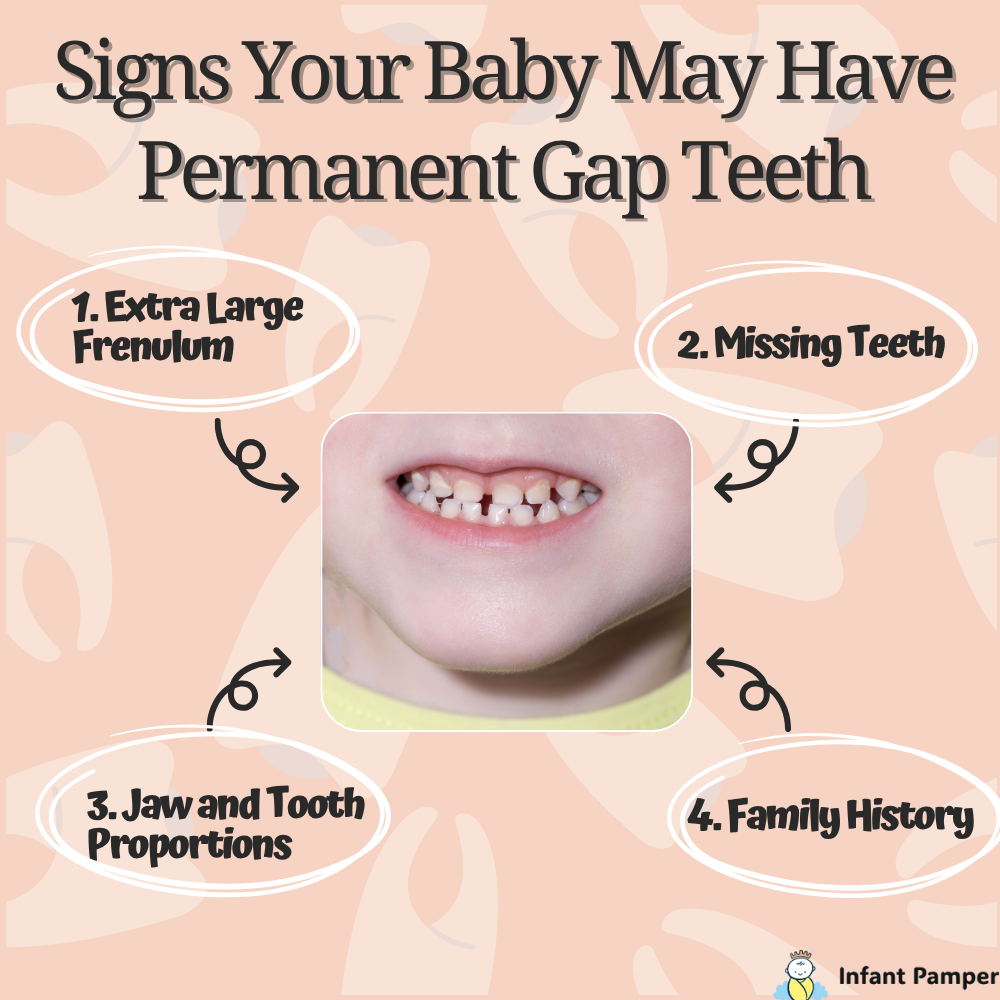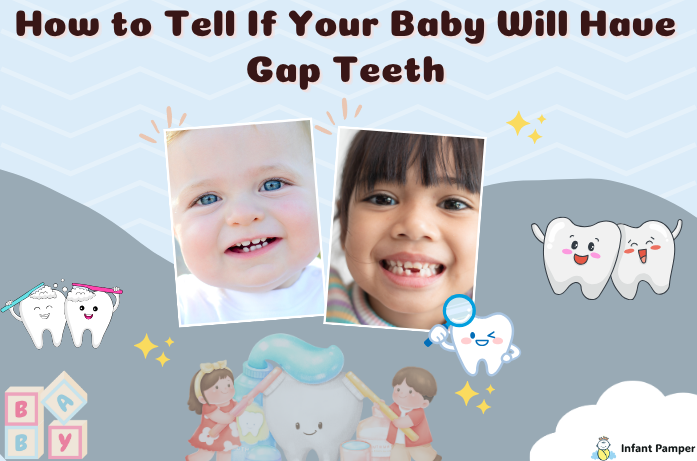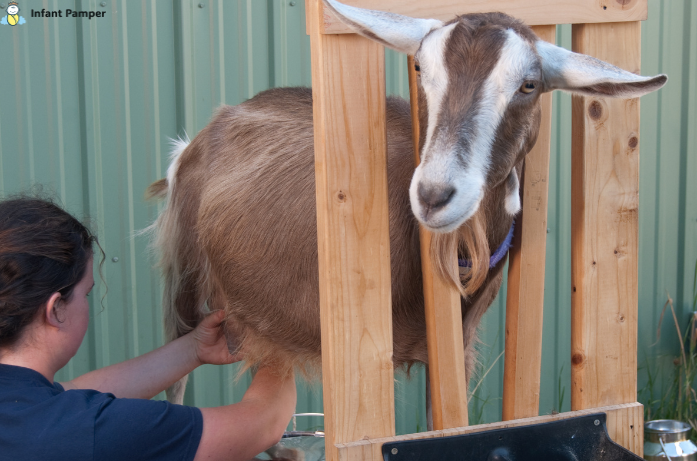By a Caring Mom for Infant Pamper
As parents, every tiny detail about our baby’s growth fascinates us, from their first smile to their first tooth. But what happens when you notice a space between those cute little teeth? Is it normal? Will your child grow up with a gap between their teeth (also called a diastema)?
The reality is, those tiny gaps in baby teeth are often completely normal, and even a sign of healthy growth. But in some cases, they might give clues about how your child’s permanent teeth will line up in the future. In this guide, we’ll uncover why gaps happen, when they’re a cause for concern, and what steps (if any) parents should take.
Why Do Babies Have Gaps Between Teeth?
Gaps in baby teeth are quite common and usually nothing to worry about. Here are some main reasons:
- Natural Growth Space
Baby teeth are smaller than adult teeth. Nature designs these gaps to give permanent teeth enough room to grow later. If there were no gaps, adult teeth might crowd together. - Jaw Size vs. Tooth Size
Some babies have larger jaws compared to their tooth size, leaving extra space between teeth. - Frenulum Attachment
The labial frenulum (a small tissue that connects the upper lip to the gum) sometimes extends between the two front teeth, causing a gap. - Habits
Thumb sucking or prolonged pacifier use can sometimes affect tooth alignment, creating gaps.
According to the American Academy of Pediatric Dentistry gaps in baby teeth are generally healthy and expected.
When Are Gaps a Good Sign?
Believe it or not, gaps can actually be a good thing in early childhood. Here’s why:
- Extra Space for Permanent Teeth
Most orthodontists agree that spaces in baby teeth are normal and even desirable. They suggest that children without gaps in baby teeth may be at higher risk of crowding later. - Easy Cleaning
Spacing allows better cleaning and reduces plaque build-up, which can help prevent cavities.

Signs Your Baby May Have Permanent Gap Teeth
While most gaps close naturally as adult teeth grow in, there are cases where a gap might persist. Here are some signs to watch for:
1. Extra Large Frenulum
If the tissue between your child’s front teeth is thick or comes down between the teeth, it can keep the teeth from closing together.
2. Missing Teeth
Sometimes, a gap indicates a missing tooth (either naturally absent or due to trauma).
3. Jaw and Tooth Proportions
If your child’s jaw remains very wide compared to their tooth size, gaps may continue.
4. Family History
Genetics play a role. If parents or siblings have gap teeth, the child might, too.
5. Permanent Teeth Are In and Gap Still Exists
Most gaps in baby teeth close when permanent teeth arrive. If a gap remains after adult teeth are in, it’s worth consulting a dentist.
When Can You Tell?
The most telling signs of whether a gap will persist usually appear between ages 6 and 8, when permanent teeth start coming in. Before this stage, predicting the outcome is much harder. That said, experts recommend scheduling an early dental visit, ideally within six months of your baby’s first tooth or by their first birthday. According to the American Academy of Pediatric, Good Oral Health Starts Early and how we take care of his teeth.
What Should Parents Do?
- Regular Dental Checkups
The first visit should happen by age one or when the first tooth appears. Early checkups allow the dentist to monitor spacing and bite alignment. - Don’t Rush Orthodontics
Most pediatric dentists wait until all permanent teeth have erupted before deciding on braces, usually around 12 years old. - Watch Oral Habits
Limit thumb sucking and prolonged pacifier use beyond age two to avoid alignment issues. - Keep Teeth Clean
Proper oral hygiene from the start is crucial, gap or no gap.
When to See a Dentist Immediately
Contact a pediatric dentist if:
- Your child has pain, swelling, or bleeding gums.
- You notice extra teeth, missing teeth, or unusual jaw growth.
- Gaps seem extremely large or teeth look severely misaligned.
Will a Gap Affect Speech or Eating?
Small gaps in baby teeth usually do not cause speech or eating issues. Larger gaps, especially in combination with other alignment problems, might require professional evaluation by a pediatric dentist or speech therapist.
Quick Parent FAQs
Q1: Are gaps in baby teeth normal?
Answer: Yes, they are common and often healthy.
Q2: Do gaps mean my child will need braces?
Answer: Not always,most close naturally as permanent teeth grow in.
Q3: When should my baby see a dentist?
Answer: By age one or six months after the first tooth.
Q4: Can thumb sucking cause gaps?
Answer: Yes, prolonged sucking may affect alignment over time.
Q5: Will a gap affect my child’s speech?
Answer: Small gaps usually don’t, but larger gaps can sometimes cause issues.
Final Thoughts
A gap between baby teeth often signals healthy growth, not a problem. Most gaps close on their own as permanent teeth come in. If you’re worried, don’t panic,just stay consistent with dental visits and good oral care.
Remember, every child’s smile is unique. Whether gap-toothed or not, that smile is precious!
👉 Want more real parent tips and expert guidance? Visit infant pamper for practical advice on baby health, growth, and development.
Disclaimer: This article is for informational purposes only and does not replace professional dental advice. Always consult a pediatric dentist for concerns.




